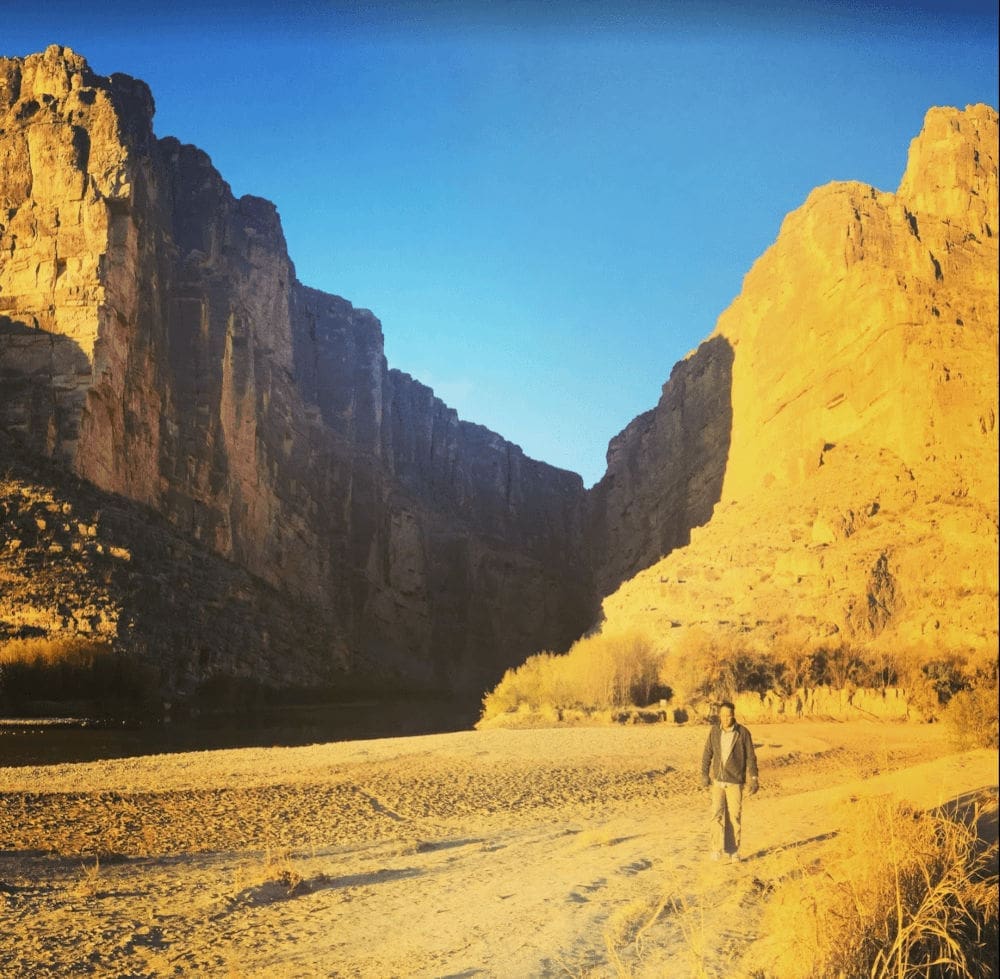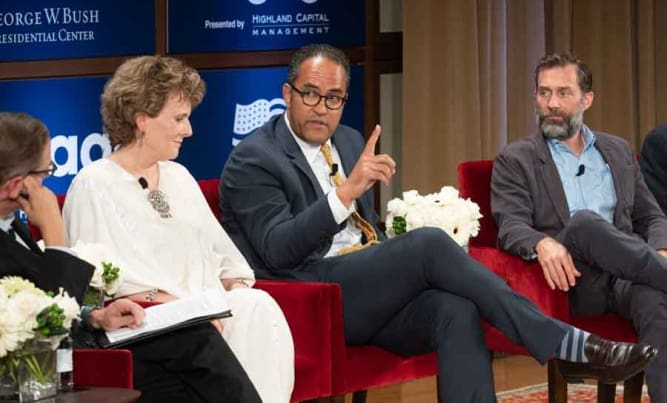Santa Elena Canyon in Big Bend National Park
8 min read
When it comes to the question of how many national parks there are in the US, the answer isn’t as straightforward as you might imagine. It all depends on what you mean by “national park.” In this blog, we’ll dive into the different definitions and explain why the answer isn’t so simple.
There are a few different ways to answer the question, “how many national parks there are in the US?” If you’re asking how many national parks in the United States are specifically designated as “national parks” by the National Park Service, the answer is 63. However, in addition to these 63 national parks the National Park Service (NPS) also manages other types of federal lands. If you count all the places that the NPS manages, the number jumps up to 425 as of November 2023.
This larger number includes places that are designated as national monuments, national preserves, national historic sites, national recreation areas, and more. While these places are managed by the NPS, they aren’t technically considered “national parks” even though they are often referred to as such.
Before breaking down the different kinds of places managed by the NPS in the national parks system, let me share my favorites.
My Top 5 Favs
I served as the co-chair of the National Parks Caucus when I was in Congress. I represented 8 of America’s national parks in my congressional district. These experiences taught me the importance of conserving our nation’s natural and cultural heritage for the benefit of current and future generations.
I didn’t have the opportunity to visit national parks when I was a kid, but it’s something I love to do now. While California has the most national parks, and not every state has a national park, It’s easy to find your park near you. Once you do, I guarantee visiting them will become a lifelong passion. Here are my top 5 favorites:
Haleakalā National Park

Bamboo Forest in Haleakalā National Park, Source: Sahil Yadav
Haleakalā National Park is located on the island of Maui in Hawaii. It is known for its stunning sunrise views from the summit of Haleakala, a massive volcano. One of the highlights of this park is the chance to see the endangered Hawaiian goose, known as the Nēnē, which can only be found in Hawaii. Another highlight is the opportunity to hike through the park’s diverse ecosystems, including subalpine forests and desert-like cinder cones.
The Home of Franklin D. Roosevelt National Historic Site

The Franklin D. Roosevelt National Historic Site in Hyde Park New York
The Home of Franklin D. Roosevelt National Historic Site is located in New York state and is the former home of the 32nd President of the United States, Franklin D. Roosevelt. One of the highlights of this park is the chance to tour the Roosevelt family home, which has been preserved to look just as it did when the Roosevelts lived there. Another highlight is the opportunity to learn about FDR’s life and accomplishments through exhibits and interactive displays.
Harpers Ferry National Historical Park

View of the town of Harpers Ferry National Historical Park in West Virginia
Harpers Ferry National Historical Park is in West Virginia and is known for its role in American history. One of the highlights of this park is the chance to visit the Armory and Arsenal. It played a key role in arming and equipping the Union army during the Civil War. Another highlight is the opportunity to take a guided tour of the town. It was founded in 1747 and has a rich history of industrialization and abolition.
Big Bend National Park

Canoers approach a dramatic gorge on the Rio Grande River in Big Bend National Park in Brewster County, Texas. Mexico is on the left, the United States to the right. Source: Library of Congress
Of all the 63 National parks in the United States, Big Bend would probably be the one that I have spent the most time in. Big Bend National Park is located in far West Texas where night skies are dark as coal and rivers carve temple-like canyons in ancient limestone. The park is named for the bend in the Rio Grande River. One of the highlights of this park is the opportunity to go rafting or kayaking in the Rio Grande. Another highlight is the chance to see a variety of wildlife, including javelinas, roadrunners, and rattlesnakes.
San Antonio Missions National Historical Park

The Alamo, one of the sites in San Antonio Missions National Historical Park, in 2016. Source: Wikimedia Commons
San Antonio Missions National Historical Park is located in Texas and is home to four Spanish colonial missions that were established in the 18th century. One of the highlights of this park is the chance to visit Mission San Jose. It’s known for its beautiful stonework and historic gardens. Another highlight is the Alamo, an important symbol of Texas independence and a place to learn about the history of the missions and the role they played for over 300 years in the development of the region.
The National Park Service (NPS)
We wouldn’t have amazing places like Big Bend or the home of FDR if it wasn’t for the National Park Service. The NPS was established in 1916 and is headquartered in Washington, D.C.
Whether it’s the smallest national park, Hot Springs National Park in Arkansas or one of the newest national parks like Ocmulgee Mounds National Historical Park in Georgia, or the largest national park Wrangell-St. Elias National Park & Preserve in Alaska, The NPS mission is the same: “preserve unimpaired the natural and cultural resources and values of the national park system for the enjoyment, education, and inspiration of this and future generations.”
As an agency of the United States federal government, they are responsible for managing and preserving a collection of 425 national parks, monuments, and other natural and cultural resources. These gems cover more than 85 million acres in all 50 states, the District of Columbia, and US territories. Because no two places are alike, they are hard to categorize. This is why the terms used to describe these national treasures are sometimes confusing.
Here, we’ll break down the different types of places managed in the national park system by the NPS and provide a few examples of each.
National Parks

South Rim of the Grand Canyon National Park in 2013. Source: Murray Foubister
National parks are areas that have been designated by the United States government as protected land. These 63 national treasures are usually chosen for their natural beauty, unique geological features, or historical significance. Some of the most popular national parks include:
- Yellowstone National Park in Idaho, Montana, and Wyoming – At Yellowstone National Park you can embark on a journey through Yellowstone’s vast wilderness. Geysers erupt with nature’s fury. Wildlife roams freely across the rugged landscape. The beauty of the world’s first national park unfolds in a symphony of awe-inspiring vistas and serene, starlit nights.
- Grand Canyon National Park in Arizona – At Grand Canyon National Park visitors can stand on the edge of the Grand Canyon’s timeless grandeur. Colorful stratum tells a story millions of years old. This vast, majestic chasm beckons adventurers and dreamers alike to ponder the Earth’s magnificent splendor.
- Yosemite National Park in California – In Yosemite National Park an explorer gets to wander through Yosemite’s enchanting realm, where granite monoliths like El Capitan and Half Dome rise as nature’s cathedrals. Waterfalls cascade with thunderous applause, and meadows and forests offer a tranquil retreat from the modern world.
- Sequoia National Park in California – In the land of giants, Sequoia National Park stands supreme. A place where the world’s largest trees reach for the skies, creating a living cathedral and a humbling reminder of nature’s enduring power and grace.
- Glacier National Park in Montana – Glacier National Park is a realm where the remnants of the Ice Age still sculpt the land. Rugged peaks and reflective lakes whisper tales of ancient times, inviting explorers to witness the raw beauty of a landscape carved by glaciers.
National Monuments

Path through the trees in Muir Woods National Monument in 2022. Source: Marty Aligata
The most significant category of national parks are national monuments. In general, smaller than those outlined above, the 84 members of this category are usually designated as being aimed towards conserving natural, historical, and cultural resources. These include prehistoric camping grounds, secluded campsites, and stunning natural wonders. Some of the most popular national monuments are:
- Lava Bed National Monument in California – Lava Bed National Monument beckons the adventurous to its labyrinth of lava-hole caves. Shadows play on ancient rock and every turn invites discovery in the subterranean wilds.
- Petroglyph National Monument in New Mexico – Nearly 25,000 sculptures etched into volcanic rocks by ancestral Pueblo peoples enchant and mystify visitors to Petroglyph National Monument
- Devil’s Tower National Monument in Wyoming – The Devil’s Tower National Monument rises solemnly above the rolling prairie. It’s a monolithic testament to Earth’s volcanic past and inspires awe as America’s first national monument.
- Muir Woods National Monument in California – You will find a sanctuary of serenity among the towering redwoods in Muir Woods National Monument. The quiet grandeur of ancient groves whispers the secrets of millennia in the cool, mist-laden air.
National Historic Sites

Fort Sumter National Historic Site in 2018. Sort: Clynnwersch
The 73 National Historic Sites and 1 International Historic Site are recognized for their historical significance. They can include buildings, landscapes, or other locations. Three popular examples include:
- Martin Luther King Jr. National Historic Site in Georgia – The Martin Luther King Jr. National Historic Site stands as a poignant tribute to the life and legacy of a civil rights titan. The site invites visitors to walk through history in the footsteps of Dr. King, whose voice still echoes through the streets of Atlanta and America.
- Salem Maritime National Historic Site in Massachusetts – At Salem Maritime National Historic Site, the rich tapestry of America’s colonial maritime history is unfurled along the historic waterfront. Tales of sea traders and the echoes of the infamous witch trials linger in the salty air.
- Fort Sumter National Historic Site in South Carolina – Fort Sumter National Historic Site marks the flashpoint of the American Civil War. It’s a solemn bastion at the edge of Charleston Harbor where the first shots were fired, forever altering the nation’s course.
National Historical Parks

Independence National Historical Park in 2016. Source: National Parks Service
The 62 National Historical Parks are larger areas that often contain multiple historic sites. Often these sites are preserved in an era-appropriate style and offer a continuing study of the times of those who lived there. Three popular examples include:
- Independence National Historical Park in Pennsylvania – Independence National Historical Park is the cradle of American democracy. A place where the Liberty Bell’s chime and the Declaration of Independence’s promise of liberty and justice resonate through the historic heart of Philadelphia.
- Harriet Tubman Underground Railroad National Historical Park in Maryland – Harriet Tubman Underground Railroad National Historical Park serves as a powerful testament to the courage and resilience of a woman who led many from bondage to freedom. Her indomitable spirit still guiding visitors along Maryland’s scenic landscapes and waterways.
- Keweenaw National Historical Park in Michigan – Keweenaw National Historical Park captures the essence of Michigan’s copper boom. The stories of miners and their communities are etched into the rugged landscape, celebrating the region’s rich heritage and the enduring legacy of the copper country.
National Memorial

Lincoln Memorial National Monument in Washington, DC in 2011. Source: Tim Evanson
The 31 National Memorials are places that honor specific people or events. Three popular examples include:
- Lincoln Memorial in Washington D.C. – The Lincoln Memorial stands as a solemn tribute to the 16th President of the United States. Its grand columns and reflective pool mirror the enduring legacy of Abraham Lincoln, who envisioned a nation conceived in liberty and dedicated to the proposition that all men are created equal.
- Oklahoma City National Memorial in Oklahoma – The Oklahoma City National Memorial stands as a symbol of resilience in the face of tragedy. Its Gates of Time and Reflecting Pool a serene homage to the victims, survivors, and heroes of the April 19, 1995 bombing, preserving the memory of that fateful day.
- Flight 93 National Memorial in Pennsylvania – The Flight 93 National Memorial is a poignant tribute to the heroic passengers and crew who, on September 11, 2001, sacrificed their lives in a Pennsylvania field. Their courageous actions will forever etched into the landscape and the heart of a grateful nation.
National Preserves

Big Thicket National Preserve in 2020.Source: William Farr
The 19 National preserves are areas that are managed in a similar way to national parks. They allow for certain uses that are not allowed in national parks, such as hunting, fishing, and trapping. Three popular preserves are:
- Big Thicket National Preserve in Texas – Big Thicket National Preserve is a biological crossroads of North America. It is A diverse mosaic of forest, wetland, and prairie. An extraordinary variety of plant and animal life coexists within the dense piney woods of East Texas.
- Tallgrass Prairie National Preserve in Kansas – Tallgrass Prairie National Preserve is a rare and sweeping vista of rolling hills and skies. The last remaining stands of unbroken tallgrass paint a lush portrait of the vast prairies that once covered the heartland of America.
- Yukon-Charley Rivers National Preserve in Alaska – Yukon-Charley Rivers National Preserve offers an untouched wilderness adventure. The wild Yukon River and Charley Rivers carve through the rugged landscapes of interior Alaska, echoing the solitude and untamed spirit of the state’s vast frontiers.
National Recreation Areas

Golden Gate Bridge as Seen From Marshall’s Beach in 2018. Source: Frank Schulenberg
The 18 National Recreation Areas are areas that are managed for their recreational opportunities, such as hiking, fishing, and camping. Three popular examples are:
- Golden Gate National Recreation Area in California
- Glen Canyon National Recreation Area in Arizona and Utah
- Chattahoochee River National Recreation Area in Georgia
National Military Park, National Battlefield Park, National Battlefield Site, and National Battlefield

National military parks and national battlefied parks are all related to military history. These types of parks have four categories over 25 locations. They include places that commemorate battles or other military engagements. Three popular examples are:
- Gettysburg National Military Park in Pennsylvania
- Chickamauga and Chattanooga National Military Park in Georgia and Tennessee
- Antietam National Battlefield in Maryland
National Lakeshores and National Seashores

The 13 National Lakeshores and National Seashores are areas that protect shorelines along lakes and oceans. They are often popular for their recreational opportunities as well as their natural beauty. Popular examples include:
- Sleeping Bear Dunes National Lakeshore in Michigan
- Cape Cod National Seashore in Massachusetts
- Assateague Island National Seashore in Maryland
National Rivers and Wild and Scenic Riverways

The 14 National Rivers and Wild and Scenic Riverways protect the natural, cultural, and recreational values of rivers. Three popular examples are:
- the Delaware Water Gap National Recreation Area in Pennsylvania
- the Niobrara National Scenic River in Nebraska
- the Rio Grande Wild and Scenic River in Texas
National Parkways

The 4 National Parkways are roads that connect two or more national parks, monuments, or other public lands. Three popular examples are:
- Blue Ridge Parkway in North Carolina and Virginia
- Natchez Trace Parkway in Mississippi, Alabama, and Tennessee
- John D. Rockefeller Jr. Memorial Parkway in Wyoming
National Scenic Trails and National Historic Trails

The 3 National Scenic Trails and National Historic Trails are long-distance routes. They highlight areas of natural beauty or historical significance. They are:
- Appalachian National Scenic Trail,
- Lewis and Clark National Historic Trail
- Trail of Tears National Historic Trail
National Reserves and Other Designations

A national historic reserve is an area that has been protected by the National Park Service because of its cultural and historical significance. They are often made up of multiple buildings or sites that work together to tell a specific story. There are only two national historic reserves in the United States: Ebey’s Landing National Historical Reserve in Washington and City of Rocks National Reserve, Idaho.
There are 11 locations that fit in the other designations categories. Two of the most famous are the National Mall and the White House in Washington, DC.
Conclusion
So, to answer the question posed in the title, there are currently 63 national parks in the United States. If you expand the definition to include all of the different types of areas outlined above, the number grows to 423. No matter how you count it, the United States has an incredible number of beautiful and historically significant places to explore.
US National Parks List & Map
Explore the Complete National Parks list and find an all-inclusive resource for each park, including free National park maps, interesting trails & trails, fascinating factual facts about the world’s most beautiful natural attractions.
First time reading? If you want rational takes on foreign policy, politics and technology then sign up below or click here for “The Brief.” It’s a twice a month email on things that aren’t being discussed but should – all in 5 minutes or less.






























